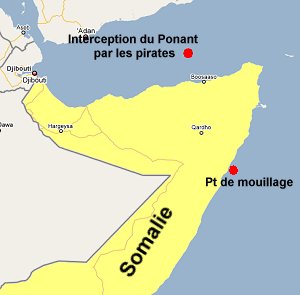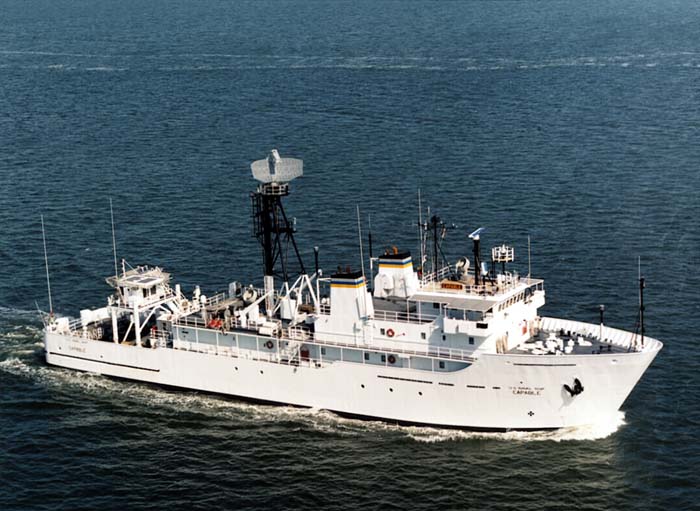Littoral Combat Ship Runs Aground
Bidders are preparing for the US Navy's second try at building the littoral combat ship, but what went wrong first time? Richard B Gasparre reports.| A shipbuilding crisis threatens to scuttle the US Navy's master plan for its next-generation fleet. The clearest example of the problems currently plaguing naval shipbuilding is the littoral combat ship (LCS) programme. "The navy wanted to achieve great leaps forward in both product and process at the same time." Once showcased as the future of naval shipbuilding and warship design, the LCS project has more than doubled in cost and time. Moreover, the prototypes haven't even been fully tested by the competing manufacturers – General Dynamics (GD) and Lockheed Martin (LockMart), let alone the navy. The navy implemented the suspension by cancelling the development contracts for LCS-3 and LCS-4, which were to be built by LockMart and GD respectively. However, the cancellation did not affect LockMart's LCS-1, named Freedom, and GD's LCS-2, the Independence, both of which are finally in the water. The LockMart LCS team technically launched the Freedom from Marinette Marine's Wisconsin shipyard in September 2006, but the ship was really just a shell. The Freedom's engines weren't actually fired up until March 2008, and the entire propulsion system completed testing on 10 July. The Independence, which was started later, did not hit the water until 28 April. Both contractors expect to have prototypes ready for sea trials late this year. By that time, the total average unit cost of the prototyping phase could climb above $600m – almost triple the initial estimate of $220m a ship. How did this happen? Anything that could go wrong did go wrong – but mostly because of misjudgement rather than misfortune. Distilling the story yields the following guide to botching development projects in five steps. 1. MAKE THE GOAL AS DIFFICULT AS POSSIBLE For the US Navy, the 'global war on terror' actually began in October 2000, when two terrorists in an explosives-filled motorboat crippled the destroyer USS Cole, causing 56 casualties. This sucker punch jolted the Navy into thinking seriously about asymmetric warfare in the 'green-water' coastal zone, which was quite different from its traditional heavy focus on mid-ocean and sea line-of-communication supremacy. The LCS concept did in fact embody several major transformations in the Navy's ship design philosophy. Tasked to make green water safe for other surface warships, the LCS had to:
In practice, the LCS design involved several major innovations that were individually challenging and collectively difficult. Although commercial container ships and the navy's own vertical launch system are modular in different ways, the LCS was effectively a melding of both. "Lockheed Martin and General Dynamics advocated high-speed civilian ferry designs as models for the LCS." Also, to achieve its 45kt target, the LCS platform required both unconventional hulls with planed or catamaran-like shapes and enormous powerplants with unprecedented turbines and non-propeller interfaces. And lastly, current stealth technology is primarily oriented toward frustrating radar, but in green water, detection is more likely to result from visual and sonar acquisition. Moreover, stealth shapes impose constraints on factors such as internal cargo volume, which is presumably important for a ship built around modularity. Furthermore, the navy wanted the LCS to be cheap enough for a 55-ship purchase, and automated enough to require an economical but unusually small crew of not more than 50. In other words, the Navy wanted to build something complex and unfamiliar – and get it right the first time. 2. IMPOSE A MANAGEMENT STYLE IDEALLY SUITED FOR COMMODITISED PRODUCTS In the early 2000s, the Pentagon believed it had an effective process for developing weapons systems more efficiently. This process lacked a central capstone technique (such as PERT or CPM in the 1950s) but it did have a motto – 'Better, Faster, Cheaper' – that resonated well with the incoming administration's managerial philosophy. In particular, then-Defense Secretary Donald Rumsfeld and his staff wanted to 'transform' the military with ideas taken from the business world. What better way to jump-start the process than by applying a supposedly innovative acquisition process to a radically new product, the LCS? To simplify, the new development paradigm featured three principles. The first was that less government is better – minimal government supervision would reduce operating friction and administrative costs. The second was that competition guarantees efficiency – the Pentagon structured LCS system development as a tournament between contractors. And faster means cheaper – to the administration, the implication was simple: to keep costs down, build quickly. Therefore, the period from concept approval to first prototype delivery was not to exceed six years. Within this period, the construction phase was allotted two years, less than half the usual time. The navy green-lighted the LCS in November 2001. As subsequent events demonstrated, these principles were flawed individually and especially collectively. But even in foresight, the navy wanted to achieve great leaps forward in both product and process at the same time. "The LCS had to be able to withstand direct attacks and absorb some damage without sinking." Even under optimal circumstances, this mindset borders on hubris, and as engineers in the trenches know, circumstances are rarely optimal. Even worse, the new management philosophy did not extend to contract structuring. Most critically, the Navy did not negotiate a firm fixed price with either LockMart or GD, but instead agreed to reimburse the contractors for cost overruns – removing the key motivation for cost discipline. The all-costs model had fallen into disfavour because of weapons cost overruns a generation ago, which made its adoption by the supposedly hard-nosed and forward-thinking administration all the more puzzling. Still, the model itself doesn't guarantee failure, especially if the customer keeps an eagle eye on the vendors. Ultimately, the navy gave the contractors primary responsibility for all phases of development and accompanying management. 3. WHEN SOURCING, BE PENNY-WISE AND POUND-FOOLISH Historically, military procurement programmes have demonstrated a tendency toward 'gold plating' components by making them conform to military standards for no compelling reason. Enforcing a rigorous policy of buying standardised components and subsystems in competitive commercial markets is the obvious antidote, and most of the Pentagon, including the Rumsfeld regime, actively promoted the commercial, off-the-shelf (COTS) idea. In response, LockMart and GD advocated high-speed civilian ferry designs as models for the LCS, and in the prevailing transformative spirit, the Navy selected them for prototype development. However, the Pentagon had misapplied COTS. The original idea was to buy commercial components, not entire platforms. The ferries were entire platforms, and as the Iraq insurgency demonstrated in 2003 and 2004, quasi-commercial platforms such as the HUMV were in dire need of custom military parts such as armour. In late 2004, just as the detailed design phase was concluding, the navy decided that the LCS had to be able to withstand direct attacks and absorb some damage without sinking. The Navy had badly misjudged the potency of the emerging threat. The new big picture invalidated many of the old design details, requiring over a year of work to be redone. In a separate initiative the navy had been revising its shipbuilding code. The new construction meant everything had to be more resilient and redundant. Consequently, COTS components would no longer suffice. "The navy still needs something to execute the missions it specified for the LCS." Although the Navy told the contractors about the changes, both sides seriously underestimated the ramifications. According to LockMart spokesman Craig Quigley: "It took us a year to fully understand how [the rule changes] would impact the project." In other words, half the estimated prototyping time was needed just to understand the ways in which the prototyping paradigm had become inadequate. Directly and indirectly, the requirement upgrades and code revisions imposed nearly 600 changes on the LCS design between 2004 and 2006. 4. DESIGN AND BUILD SIMULTANEOUSLY Normally, this amount of redesign requires postponing construction, because shipbuilding is best done from the inside out. Nevertheless, construction began at the start of 2005. Despite misgivings among some uniformed field personnel, the navy remained committed to promptly executing all the new concepts. The deteriorating Persian Gulf situation made the strategic need seem all the more pressing. On the other hand, the contractors were far less concerned about the situation than they would have been under a fixed-price contract. In fact, each contractor feared that voicing its worries would have put it at a competitive disadvantage vis-à-vis the other for the main production phase. 5. WHEN YOU'RE IN A HOLE, KEEP DIGGING Not surprisingly, construction started poorly and got worse. In past times, the navy's own project managers would have cut the failure short. However, the less-is-more dogma prevented the navy from perceiving the problems early. For example, no full-time monitors were initially on site in Wisconsin. As if the embedded inefficiencies weren't bad enough, external shocks exacerbated the situation, Then by the time the Navy realised the full magnitude of the problem in 2007, the damage had been done. The Navy finally asked the contractors to cap costs. When they refused, the Navy cancelled the back end of development in November 2007. "The LCS project has more than doubled in cost and time." THE LCS TODAY: WATER OVER THE DAM? At a minimum, the navy still needs something to execute the missions it specified for the LCS. The actual performance of the Freedom and the Independence, however, will probably not be evident until next year. Anxious to demonstrate some managerial competence, the navy has taken the programme back to the bidding stage. This time, however, Congress has mandated a fixed maximum price of $460m a ship, excluding armament. Both LockMart and GD plan to bid. Having completed a design and conducted some 'wet-hull' testing, the firms should be more able to make a realistic flat bid. But has the US Navy learnt anything? If nothing else, the apparent decision to forego DDX development for more Burkes shows appropriate modesty. But just as the LCS reflected unwarranted self-confidence, the navy can't flop to the opposite extreme and forego new ship development indefinitely. Perhaps the moral of the LCS story is this: the US can produce better ships, or produce ships better – but it can't do both at the same time. |   Expand Image The LockMart LCS team technically launched the Freedom from Marinette Marine's Wisconsin shipyard in September 2006, but the ship was really just a shell. The Freedom's engines weren't actually fired up until March 2008, and the entire propulsion system completed testing on 10 July. |
  Expand Image Freedom's steerable Rolls-Royce water jets are one of several innovative design features. | |
  Expand Image LockMart and GD advocated high-speed civilian ferry designs as models for the LCS, and in the prevailing transformative spirit, the Navy selected them for prototype development. | |
  Expand Image The Independence's trimaran hull makes an unusually wide flight deck possible. |















 The excellent type 2087 low frequency sonar. Seen here on the quarterdeck of HMS Westminster, the yellow array is lowered into the water when in use.
The excellent type 2087 low frequency sonar. Seen here on the quarterdeck of HMS Westminster, the yellow array is lowered into the water when in use. 












